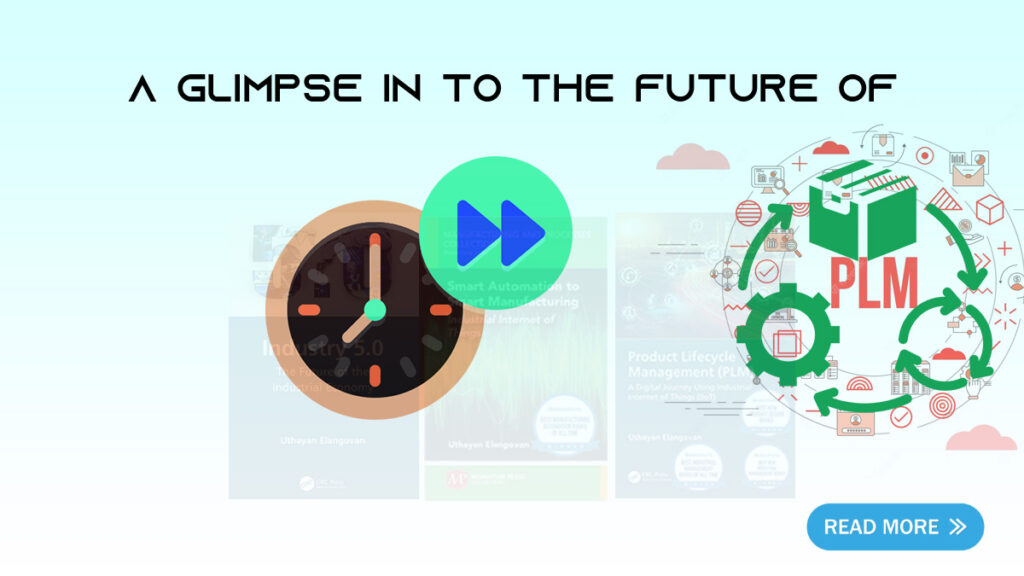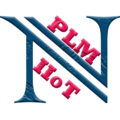In today’s fast-paced and ever-evolving business landscape, organizations are increasingly relying on efficient and effective product lifecycle management (PLM) strategies to drive innovation, optimize processes, and stay competitive. As we venture into mid of 2023, this comprehensive article explores the current state of PLM and examines the exciting advancements and opportunities that lie ahead. Drawing insights from various sources across the globe, we delve into the future of PLM and its potential implications for industries worldwide.

The Evolving Landscape of PLM:
Product lifecycle management has witnessed significant advancements over the past few years. Traditional PLM systems focused on managing product data and processes within an organization. However, the future of PLM encompasses a broader scope, integrating emerging technologies and enabling seamless collaboration across multiple stakeholders.
a. Digital Twins and Simulation:
Digital twin technology has emerged as a game-changer in PLM. By creating virtual replicas of physical products, organizations can simulate and analyze performance, identify potential issues, and optimize designs before manufacturing. According to Accenture, by 2023, the digital twin market is expected to reach $16 billion globally.
b. Cloud-Based PLM:
Cloud-based PLM solutions are gaining momentum, allowing companies to store, access, and collaborate on product data in real-time from anywhere. Cloud PLM offers scalability, flexibility, and cost-efficiency, enabling organizations to streamline processes and enhance cross-functional collaboration.
OpenBOM PLM – OpenBOM, an open and cloud-based PLM platform, is gaining popularity for its focus on interoperability and data exchange. It enables seamless collaboration across engineering, manufacturing, and supply chain teams, fostering transparency and efficiency throughout the product lifecycle
c. AI and Machine Learning:
Artificial intelligence and machine learning are revolutionizing PLM by automating repetitive tasks, generating insights from vast data sets, and supporting decision-making processes. Intelligent PLM systems leverage AI and ML algorithms to optimize product development, predict customer preferences, and improve manufacturing efficiency.
2. Industry-Specific Applications of PLM:
The future of PLM extends beyond traditional manufacturing industries. Various sectors are exploring tailored PLM applications to meet specific challenges and capitalize on opportunities.
a. Automotive and Mobility:
The automotive industry is embracing PLM to navigate the complexities of electric and autonomous vehicles. PLM enables seamless integration of hardware and software systems, enhances supply chain management, and accelerates time-to-market for innovative mobility solutions.
b. Aerospace and Defense:
In the aerospace and defense sector, PLM plays a vital role in managing the lifecycle of highly complex products. Advanced PLM systems facilitate collaboration between manufacturers, suppliers, and regulatory bodies, ensuring compliance, minimizing risk, and optimizing maintenance and repair operations.
c. Healthcare and Life Sciences:
PLM solutions are transforming the healthcare and life sciences industry by streamlining regulatory compliance, accelerating product development, and enhancing quality control. Integrated PLM platforms facilitate end-to-end visibility of medical device and pharmaceutical lifecycles, ensuring adherence to stringent regulations.
3. Enhanced Collaboration and Supply Chain Integration:
The future of PLM revolves around fostering collaboration and integrating the supply chain ecosystem. Here are a few key trends:
a. Extended Enterprise Collaboration:
PLM systems are evolving to accommodate collaboration beyond organizational boundaries. Manufacturers, suppliers, distributors, and customers can share real-time data, enabling seamless collaboration and reducing time-to-market.
b. Industrial Internet of Things (IIoT) Integration:
The integration of IoT devices and sensors with PLM systems enables real-time data collection and analysis throughout the product lifecycle. IoT-powered PLM improves predictive maintenance, enhances quality control, and enables the creation of new revenue streams through data-driven services.
c. Blockchain for Traceability:
Blockchain technology provides a decentralized, secure, and immutable ledger that enables traceability across the supply chain. By integrating blockchain with PLM, organizations can enhance transparency, ensure authenticity, and enable secure sharing of product information.
4. Sustainability and Circular Economy:
PLM is playing a crucial role in promoting sustainability and enabling the transition to a circular economy. Organizations are leveraging PLM to optimize material usage, reduce waste, and design products with extended lifecycles. Sustainable PLM facilitates efficient recycling, remanufacturing, and end-of-life management, reducing environmental impact and enhancing brand value.
Checkout the article on PLM with Industry5.0 here.
5. Data-driven PLM and Analytics:
In the future of PLM, data-driven insights and analytics play a vital role in optimizing product development, improving operational efficiency, and enhancing customer experiences.
a. Predictive Analytics:
By leveraging predictive analytics, organizations can anticipate product performance, identify potential issues, and proactively address them. Predictive maintenance, quality control, and demand forecasting are areas where PLM integrated with advanced analytics can drive significant improvements.
b. Real-time Monitoring and Feedback:
PLM systems equipped with real-time monitoring capabilities enable organizations to capture data throughout the product lifecycle. This data can be analyzed to identify patterns, monitor performance, and gather customer feedback, leading to continuous improvements and enhanced product offerings.
To learn about IIoT, refer our publication here.
7. Industry Standards and Interoperability:
Interoperability and adherence to industry standards are crucial for seamless integration and collaboration across multiple stakeholders. CIM Data, a leading research and consulting firm specializing in PLM, emphasizes the importance of interoperability to overcome data silos and enable efficient information exchange between systems and organizations.
a. ISO 10303 (STEP):
The ISO 10303 standard, also known as STEP (Standard for the Exchange of Product model data), enables interoperability between PLM systems, CAD software, and other related applications. It ensures consistent data exchange, promotes collaboration, and supports end-to-end product lifecycle management.
b. PLM Collaboration Services:
CIM Data highlights the significance of PLM Collaboration Services (PLCS) as an emerging standard for interoperability in PLM. PLCS defines data exchange models and protocols, facilitating seamless collaboration between different PLM systems and enabling information sharing throughout the extended enterprise.
Check our publication – Product Lifecycle management (PLM): A Digital journey using industrial internet of things (IIoT)
Final Thoughts:
As we embrace the future of PLM, the integration of data-driven analytics, adherence to industry standards, and seamless interoperability are crucial for success. By harnessing predictive analytics, real-time monitoring, and integrating PLM with PDM systems, organizations can make informed decisions, optimize processes, and deliver superior products to market. The integration of digital twins, cloud-based PLM, AI and ML, and the adoption of industry-specific PLM applications are shaping the way products are developed, manufactured, and maintained. The adoption of industry standards such as ISO 10303 and PLCS, along with innovative platforms like OpenBOM, paves the way for collaboration, efficiency, and competitiveness in the evolving landscape of PLM. The future of PLM holds immense potential for innovation, streamlined processes, and sustainable growth, enabling organizations to stay ahead in an increasingly competitive global marketplace.
The future of PLM is an exciting journey, empowering organizations to innovate, collaborate, and thrive in an increasingly competitive landscape. Explore NeelSMARTEC’s comprehensive PLM services today and embark on a transformative journey towards streamlined processes, enhanced collaboration, and sustainable growth. Unlock your organization’s true potential with Neel SMARTEC PLM services.
References:
- CIMdata. (2023). Product Lifecycle Management (PLM) Interoperability: CIMdata’s Perspective. Retrieved from here.
- ISO. (2020). ISO 10303 – STEP standard. Retrieved from https://www.iso.org/standard/63147.html
- OpenBOM. (n.d.). OpenBOM – Open, Cloud-Based, Real-Time Bill of Materials and Inventory Management System. Retrieved from https://www.openbom.com/
- Accenture. (2020). Exploring the impact of digital twins.
- PwC. (2022). Digital engineering: Rethinking how engineering is done.
- Siemens Digital Industries Software. (2022). The top 10 trends shaping the future of PLM.


